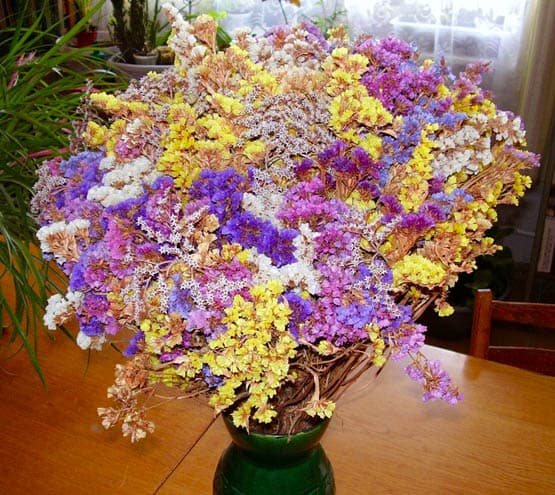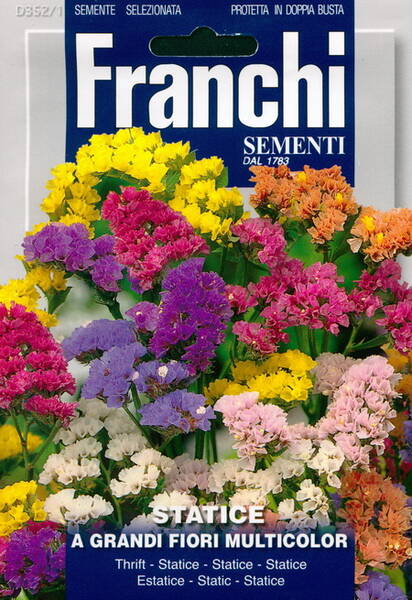One of the most popular plants for arrangements.
When dried, it retains its bright flower colors for over a year (up to three years!), adding vivid shades to compositions and bouquets. Looks excellent in rock gardens and mixed borders.
Plant height 45–60 cm. Inflorescence diameter 3–5 cm.
A perennial herbaceous plant cultivated as an annual in our cool climate.
Used for flower beds and borders, as a cut flower, and for dried arrangements.
Sowing: February–March for seedlings.
After the first two true leaves appear, seedlings are pricked out. Transplant outdoors in May, spacing 35–40 cm apart.
Any well-drained soil and sunny location are suitable.
Care: water only young plants during dry weather. Feed seedlings 2–3 times (first – one week after pricking out).
After transplanting, feed another 2–3 times with a complete mineral fertilizer.
Flowering: from June until heavy frosts.
For dried flowers, cut inflorescences in full bloom and dry in bunches in a ventilated room.
1.0 g = 350 seeds.

* Limonium sinuatum (Statice sinuata)
Origin: Mediterranean, Asia Minor.
A perennial herb grown as an annual. Stems up to 60 cm tall. Basal leaves numerous, up to 10 cm long. In cultivation since 1600.
Location: Statice is a fairly cold-tolerant (can withstand light frosts) and very sun-loving plant.
To get a compact plant with dense inflorescences, it must be in full sun all day, as even slight shading reduces cutting quality and compactness. Drought-tolerant and undemanding to soil.
Propagation: by seeds sown for seedlings from late February to late March. 1 g contains about 350 seeds. Germination occurs 7–10 days after sowing. Prick out seedlings into pots, as the deep taproot does not tolerate transplanting well. Transplant outdoors in the second half of May, spacing 30–40 cm apart. Feed with a complete fertilizer every 10–15 days.
Flowering starts in mid-June, sometimes even in seedlings – remove the first flowers in such cases. Seeds remain viable for 4–5 years.
Use: widely used in borders, flowerbeds, groups, and mixed plantings, especially compact varieties, as well as for fresh and dried bouquets.
During flowering, it attracts many butterflies.
For drying, cut inflorescences in full bloom, as buds do not open when dried. Slightly unopen flowers may be cut before rain to avoid damage to the papery calyces. Dry bunches upside down in a dry, ventilated, shaded area. In sunlight, stems pale and yellow, and pink or salmon shades may fade. Blue and yellow colors are the most lightfast.
Cutting continues until frost. Frosted flowers crumble easily and are suitable only for small crafts or decorations.

Wavyleaf sea lavender, Thrift.












